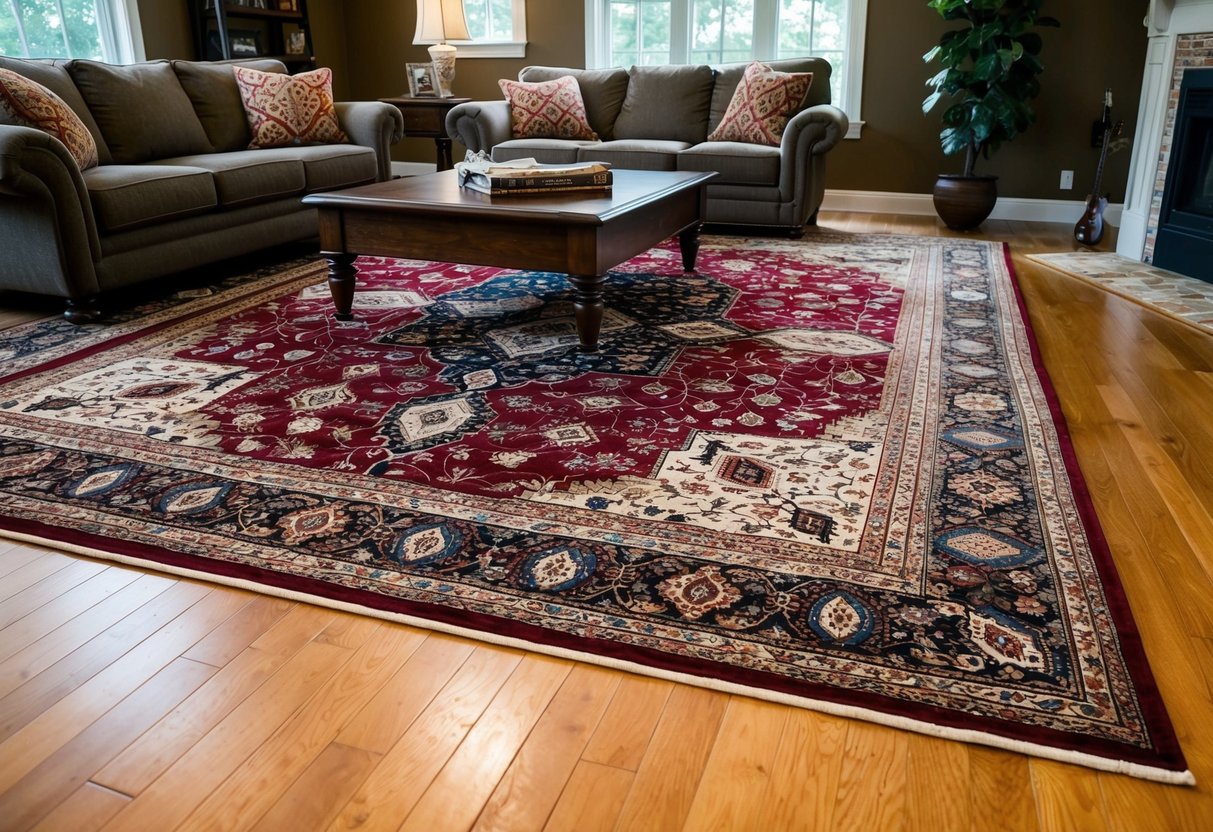Timeless Rugs That Bring Elegance to Any Room: A Classic Style Guide
Creating a sophisticated ambiance in any room often starts from the ground up, and there’s no better foundation than a timeless rug. These pieces not only add warmth and texture to a space but also elevate it with their enduring charm. Choosing the right timeless rug can seamlessly blend elegance with any interior design style, enhancing the overall aesthetic.
Incorporating a classic rug into home decor allows individuals to play with patterns, colors, and textures without overwhelming the room. They serve as a foundation upon which furniture can be tastefully arranged. Whether it’s a Persian design or a simple, muted pattern, a well-chosen rug tells a story and acts as a focal point in the room.
The allure of timeless rugs lies in their versatility. They harmonize beautifully with both modern and traditional interiors, offering a unique balance of style and comfort. As they age, these rugs often increase in character and appeal, proving to be not just a decorative choice, but an investment in the home’s overall elegance.
The Essence of Timeless Rugs
Timeless rugs effortlessly blend tradition and modernity. They highlight the enduring appeal of classic designs while transcending fleeting trends. The unique interplay between traditional craftsmanship and contemporary aesthetics creates a perfect balance. This section will explore these ideas further in detail.
Defining Timeless Design
Timeless design in rugs focuses on elements that are both enduring and adaptable. Patterns such as florals and geometric shapes have long been staples, with neutral colors playing a crucial role in their lasting appeal. These elements create a balanced ambiance that complements various interior styles.
Materials often used in timeless rug designs include wool and silk. These materials provide both durability and elegance. The craftsmanship involved in hand-knotting or weaving rugs is another defining feature, ensuring each piece withstands the test of time. A timeless rug can easily become a cherished heirloom, adding depth and character to a room.
The Intersection of Tradition and Modernity
Rugs that meet the criteria for timelessness often skillfully integrate aspects of both traditional and modern design. Classic Persian or Oriental patterns can be reinterpreted with contemporary palettes, making the rug more versatile in a range of settings. This blend appeals to those who appreciate history but desire an updated look.
Incorporating both styles requires a keen understanding of what makes each appealing. Traditional patterns offer a sense of elegance and history, while modern aesthetics provide a minimal or bold edge. These rugs are thus able to adapt to changing tastes, fitting seamlessly into eclectic or minimalist design schemes.
Rug Styles That Transcend Trends
Certain rug styles manage to maintain relevance regardless of shifting trends. Patterns like stripes or tribal motifs are examples that endure due to their versatility. Subdued tones and understated designs can easily adapt to different decor themes, from rustic to urban.
Vintage and antique rugs are often sought after for their authenticity and unique character. These pieces carry stories and craftsmanship from past generations, elevating the space they inhabit. Often, the simplest designs make the most profound impact, allowing the rug to effortlessly enhance the room’s elegance and style.
Materials and Craftsmanship

Exploring various materials used in rug making highlights the importance of durability and eco-friendliness. Understanding the craftsmanship involved unveils the rich history and artistry behind each piece.
Natural Fibers for Longevity
Rugs made from natural fibers such as wool, cotton, and silk are renowned for their durability and timeless appeal. Wool, a popular choice, offers a soft texture coupled with resilience, making it suitable for high-traffic areas. Its natural oils repel stains and contribute to the rug’s longevity.
Cotton rugs provide a lightweight option with easy maintenance, ideal for casual and comfortable spaces. Silk rugs, though delicate, exhibit unmatched beauty and shine. Their exquisite finish and intricate patterns reflect a rich history of traditional craftsmanship.
These materials not only stand the test of time but also bring a natural elegance to any room. The choice of a natural fiber rug enhances both aesthetic and functional aspects of a space, allowing it to age gracefully.
Eco-Friendly Choices in Rug Making
Eco-conscious consumers have a range of options in rug manufacturing. Sustainable materials are gaining popularity as they reduce environmental impact. Bamboo and jute, both renewable resources, are excellent examples of eco-friendly fibers used in rugs.
Bamboo, a fast-growing plant, requires minimal resources to cultivate. It yields strong, durable fibers suitable for eco-friendly rug production. Jute, equally sustainable, is often used for its earthy texture and rustic appeal.
These choices not only contribute to environmental sustainability but also imbue spaces with natural charm and warmth. Environmentally friendly rug making practices ensure minimal waste and promote the use of biodegradable materials.
The Artistry of Rug Weaving
The craftsmanship of rug weaving varies across cultures, showcasing unique techniques and patterns. Persian and Oriental rugs are archetypes of this artistry, with designs passed down through generations. These rugs often feature complex motifs and vibrant colors.
Hand-knotting is a prestigious technique in which skilled artisans painstakingly weave fibers one knot at a time. This method results in dense, intricate patterns. In contrast, hand-tufting offers a faster production process, using a tool to push fibers through a backing material.
The legacy and cultural significance underlying these methods highlight the dedication and skill required in rug weaving. Whether hand-knotted or hand-tufted, the artistry involved in creating these rugs tells a story of tradition and elegance.



